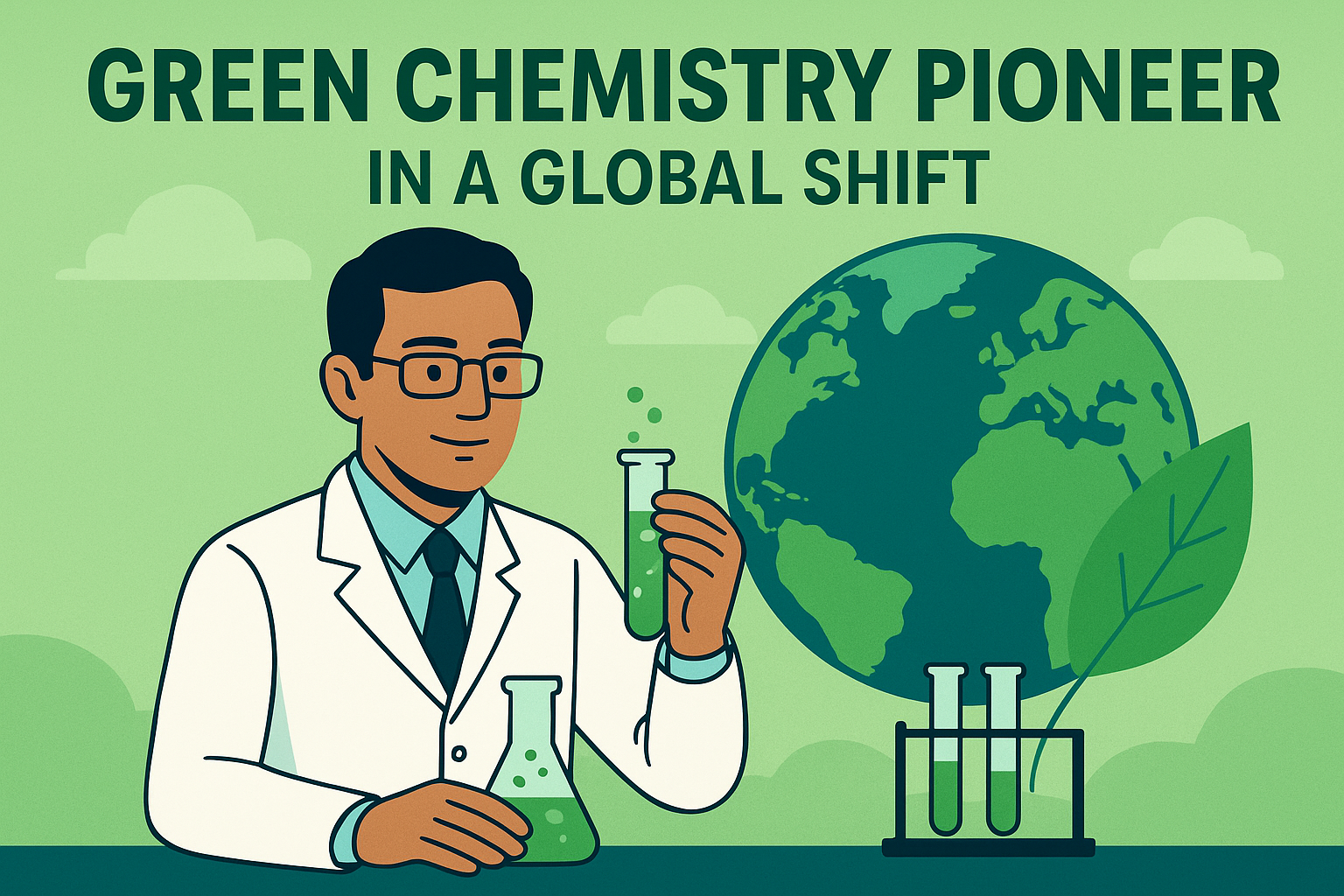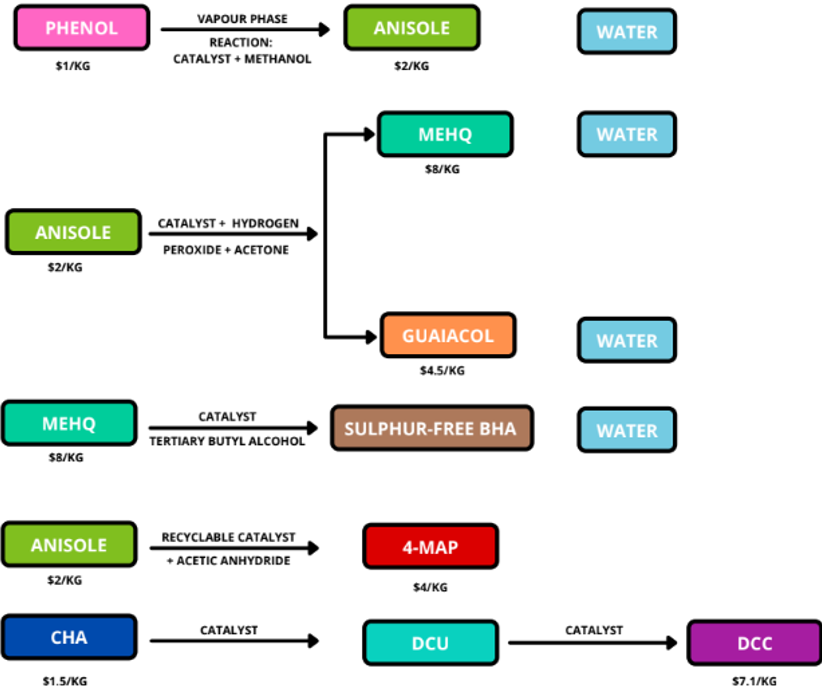Green Chemistry Pioneer in a Global Shift
The Indian specialty chemicals sector has long talked about China+1, import substitution, and green chemistry—but few have executed at scale. Clean Science stands apart: a rare player that has mastered green chemistry at scale, enabling it to export even to China, the world’s one of the largest chemical market.
While ~35% of FY23 revenues came from China, this has moderated to ~22% due to a shifting product mix. Still, this underscores Clean Science’s R&D-led model, allowing it to compete with Chinese peers on cost and quality—without the same scale.
As Western economies reduce reliance on China (China+1), Clean Science is well-placed to emerge as a preferred substitute, thanks to its process innovation, cost leadership, and sustainability credentials.
Why Green Chemistry Matters
Green chemistry—designing processes to minimize hazardous waste, reduce solvent use, and improve yields—is the future of the chemical industry. Companies adopting green processes not only lower costs (fewer steps, less waste, less energy) but also reduce regulatory risks and align with global sustainability mandates.
Clean Science is at the forefront of this transition:
- All facilities are Zero Liquid Discharge (ZLD)—recycling and reusing wastewater.
- Process innovations enable higher plant throughput and lower environmental footprint.
In an industry where regulatory headwinds and ESG pressures are reshaping competitive dynamics, Clean Science’s first-mover advantage in green processes makes it a clear long-term winner.
Superior Earnings, Structural Re-Rating
We believe Clean Science will outperform peers, driven by:
- Market leadership in green chemistries.
- Process innovation-led cost advantages.
- Exposure to secular themes: import substitution, China+1, and sustainability.
While many peers are vulnerable to raw material price swings and supply chain shocks, Clean Science has built a strong moat through backward integration into key inputs and a deep understanding of catalyst design. This technical know-how gives it an edge—helping it manage costs, protect margins, and run highly efficient processes. Together with a focused specialty product portfolio and a robust R&D pipeline, Clean Science is well-placed to deliver consistent earnings growth, even as others in the sector struggle with volatility.
Our View on Clean Science:

Clean Science has consistently outperformed its peers, delivering industry-leading margins and demonstrating remarkable consistency in earnings, despite the cyclical nature of the chemical sector. While the company trades at a steep valuation—its 5-year median P/E hovers around 60x—this premium is not an anomaly for companies that combine high growth, structural moats, and strong profitability metrics. Historically, businesses that demonstrate the ability to sustain high margins, maintain pricing power, and deliver consistent earnings growth tend to command premium multiples—and Clean Science is no exception.
Our Investment Case
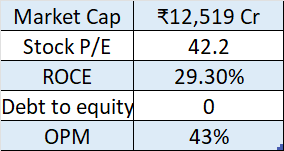
What sets Clean Science apart is its deep moat built on backward integration, process innovation, and green chemistry expertise. Its backward integration in critical raw materials and catalysts gives the company a unique edge: it not only reduces dependence on external suppliers but also secures pricing power, enabling Clean Science to pass on raw material cost fluctuations while defending its margins. In a sector often exposed to commodity price volatility, this is a significant strategic advantage.
The company has also reduced cyclicality risks, which is rare for a chemical manufacturer. Its specialty product portfolio, high customer stickiness, and relentless focus on new product development (NPD) ensure that growth is not just an aspiration but a structural feature of the business. The recent foray into HALS (Hindered Amine Light Stabilizers)—Clean Science’s largest product pipeline to date—underscores its ambition and ability to expand into newer, greener chemistries.
Looking at the track record, Clean Science has demonstrated its ability to scale, innovate, and defend margins. As long as the company continues to execute on its robust R&D pipeline and maintains its technological edge, we believe it is well-positioned to sustain high growth while keeping margin resilience intact.
Structurally, we favour companies with niche chemistry capabilities, strong IP, and global client relationships—Clean Science ticks all these boxes. Its premium valuation is justified, and we see further upside as it leverages its technical expertise into new applications with high optionality.
Before we dive deeper, let’s take a step back and absorb these mind-boggling numbers that capture the Clean Science story over the last five years:
| Particulars (INR CR) | Mar-20 | Mar-21 | Mar-22 | Mar-23 | Mar-24 | Mar-25 | 5 YR CAGR |
| Sales | 419 | 512 | 685 | 936 | 791 | 967 | 18% |
| Gross Profit % | 69% | 76% | 67% | 65% | 65% | 64% | 68% |
| EBITDA % | 44% | 51% | 44% | 43% | 42% | 40% | 44% |
| CFO/EBITDA | 86% | 74% | 42% | 69% | 71% | 55% | 66% |
| Net Profit % | 33% | 39% | 33% | 32% | 31% | 27% | 33% |
| ROCE % | 59% | 61% | 47% | 44% | 30% | 27% | 45% |
- Sales have compounded at 18% over the past five years
- Gross margins have averaged 68%, reflecting the strength of Clean Science’s backward integration, cost control, and ability to command pricing power through niche products.
- EBITDA margins remain industry-leading at ~44%, showing Clean Science’s ability to generate strong operating profits.
- Cash conversion (CFO/EBITDA) at 66% highlights the quality of earnings—Clean Science doesn’t just report profits on paper; it translates them into cash.
- Net profit margins have averaged 33%, underlining the high-value, low-waste model of the business.
- ROCE has trended down from 61% to 27%, primarily due to increased investments in capacity and new products—but remains robust at 45% on a 5-year average.
Company Background
Clean Science & Technology, a leading chemicals player in India, is among the few companies globally focusing on green, eco-friendly and cost-competitive technologies using in-house catalytic processes. Clean Science manufactures functionally critical speciality chemicals such as Performance Chemicals (i.e. MEHQ, BHA, TBHQ, AP, and HALS) Pharma and Agro Intermediates (i.e. Guaiacol, Veratrole and DCC) and FMCG Chemicals (i.e. 4-MAP and Anisole). Entire product & process R&D and technology development has been done in-house.
Within 17 years of incorporation, the company has grown to be the largest manufacturer globally of MEHQ, BHA, Anisole and 4-MAP in terms manufacturing capacities. Company has the largest capacity in the world for their flagship products.
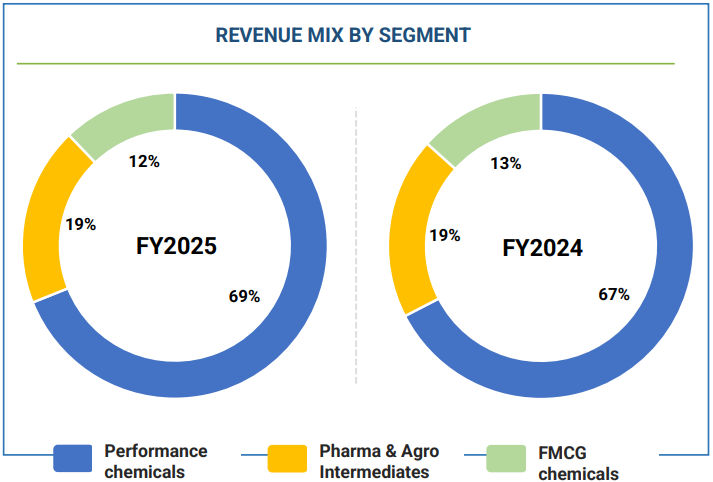
Performance Chemicals
- MEHQ No.1 in world
- Used as polymerization inhibitor in acrylic acids, acrylic esters, super absorbent polymers (diapers and sanitary pads)
- Pre-cursor for agrochemical industry.
- BHA No.1 in world
Used as anti-oxidant in food and feed industry - HALS No.1 in India
- HALS 701 is used in water treatment
- HALS 770, 622, 944, 783 is used for UV stabilization in a variety of polymers
Pharma & agro Intermediates
- Guaiacol: No.1 in India & No.2 in World
Pre-cursor to manufacture APIs for cough syrup
Key raw material to produce Vanillin - DCC (Dicyclohexyl Carbodiimide) No.1 in India & No.2 in World
Used as reagent in anti-retroviral
FMCG Chemicals
- 4-MAP No.1 in world
Used in UV blocker in sunscreens - Anisole: No.1 in world
Precursor to perfumes, insect pheromones, pharmaceuticals
Majority of Anisole produced is used for captive consumption
Geography Breakup
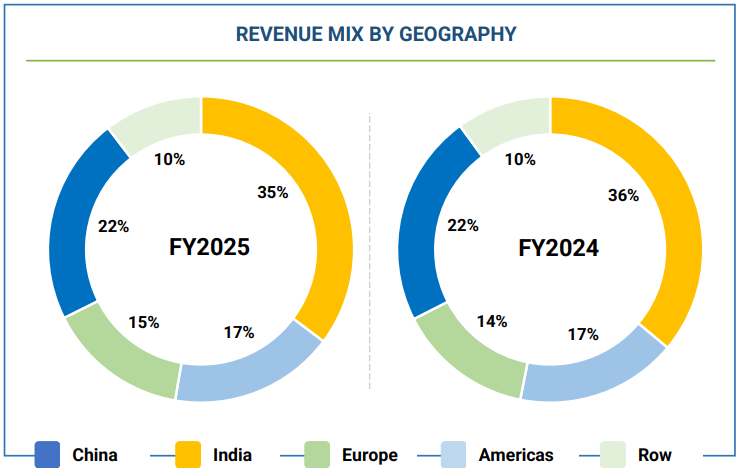
Exports contribute to 65-70% of revenue a major chunk coming from China: Clean Science’s customers comprise manufacturers in India and other regulated international markets including China, Canada, Europe, USA, Taiwan, Korea, and Japan. Key customers include Bayer, SRF, Gennex Laboratories, Nutriad International NV and Vinati Organics. Some of its customers have been associated with the company for over 10 years.
What Makes Clean Science Stand Amongst its Peers
Strong competitive edge based on in-house catalytic technology: Clean Science has a sharp competitive edge due to its robust focus on: a) process innovation and b) development of newer/clean chemistries, based on in-house catalytic technology. Some of these technologies have been developed and commercialised for the first time globally. This, along with backward integration (for commodity chemicals such as Phenol), has enabled Clean Science to be one of the fastest growing and among the most profitable specialty companies globally.
Clean technologies to make Clean Science a sustainable and long-term supplier: Using clean technologies, Clean Science has been able to eradicate the need of polluting reagents that result in toxic effluents. For instance, for the production of BHA, it does not use dimethyl sulphate (which is used in traditional manufacturing). As a result, the company’s BHA is sulphur-free. Similarly, for the production of DCC, it does not use carbon disulphide and hence its DCC is sulphur-free. Further, for the production of 4-MAP, it does not use aluminium chloride. Hence, there is minimal effluent generation. Such practices have not only helped the company keep its ETP costs significantly low (at ~0.6% of sales) but made it a sustainable and a long-term supplier.
UNIQUE MANUFACTURING PROCESS
CONVENTIONAL MANUFACTURING PROCESS
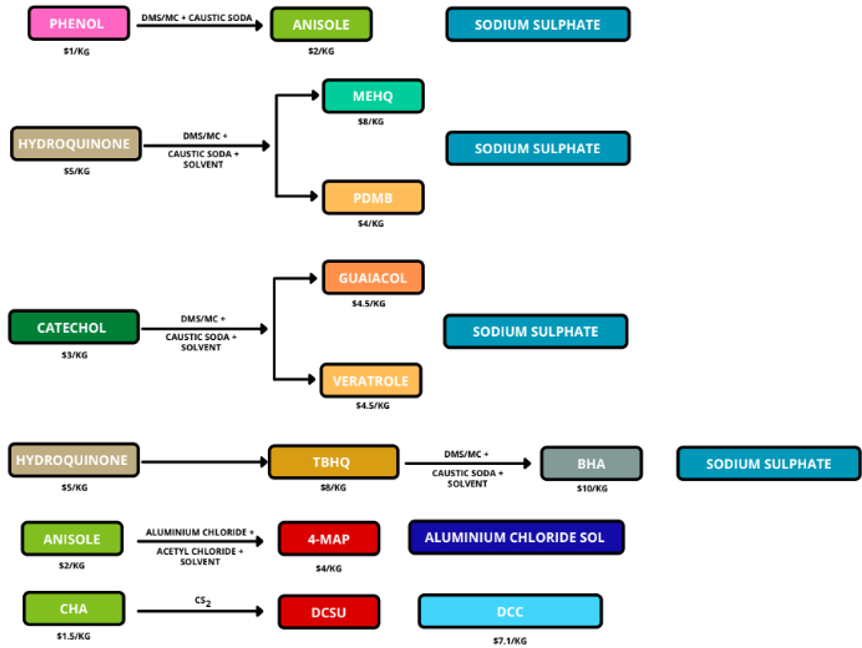
What this simply means is Clean Science has built a strong moat through backward integration into key inputs and a deep understanding of catalyst design. This technical know-how gives it an edge—helping it manage costs(fewer steps, less waste, less energy), protect margins, and run highly efficient processes.
Strong technocrat promoters, instrumental in development of catalytic technology: Clean Science is led by Ashok Ramnarayan Boob (B.Engg, Chemicals, ICT, Mumbai, MD), Siddhartha Ashok Sikchi (B.Tech, ICT, Mumbai, M.Sc.), Krishna Ramnarayan Boob (B.Pharm, Wholetime Directors), and Parth Ashok Maheshwari (B.Tech, Chemicals, MBA, VP), who have a combined experience of over 60 years in the chemical industry. Mr Siddhartha has been instrumental in the development of in-house catalytic technology.

